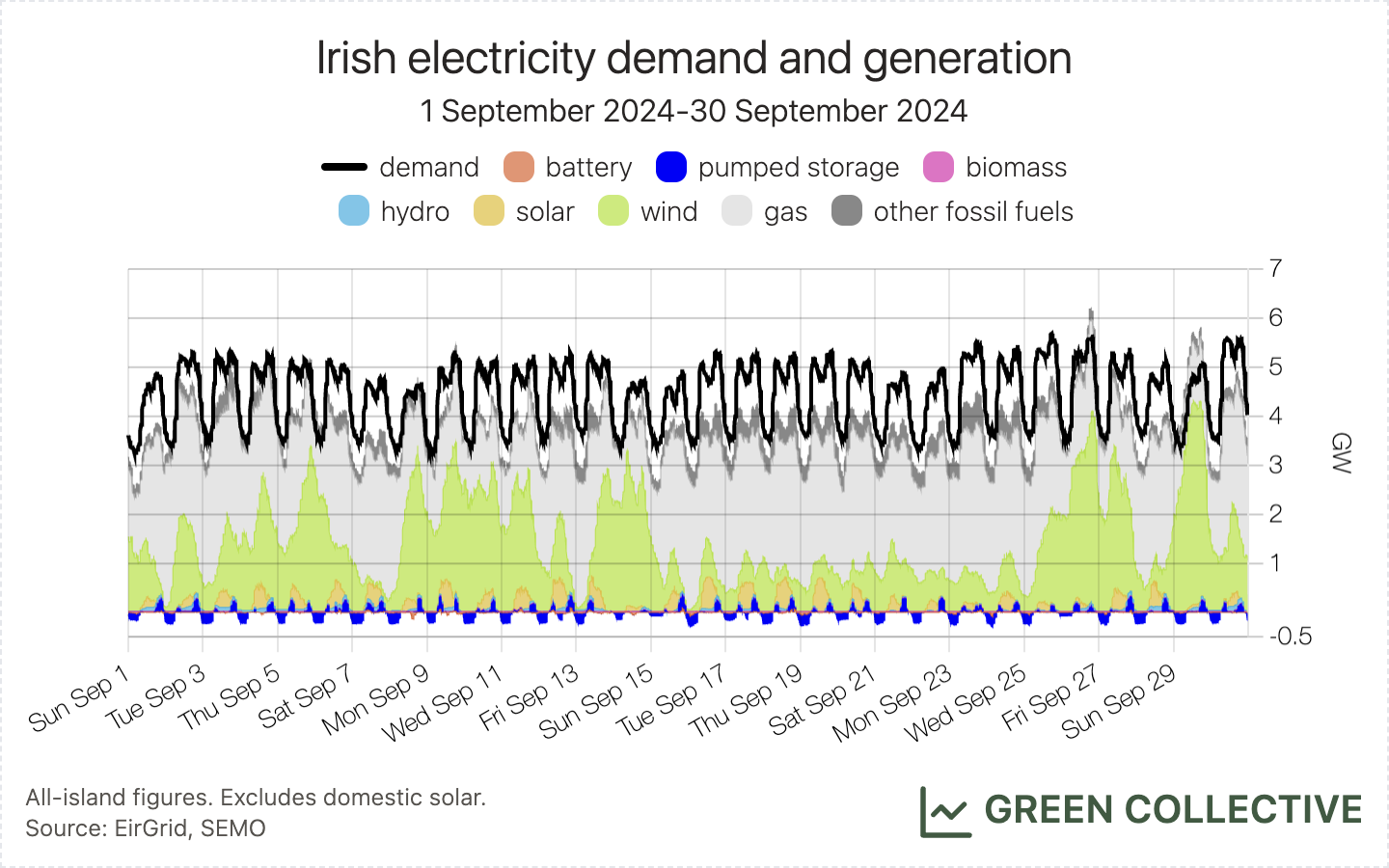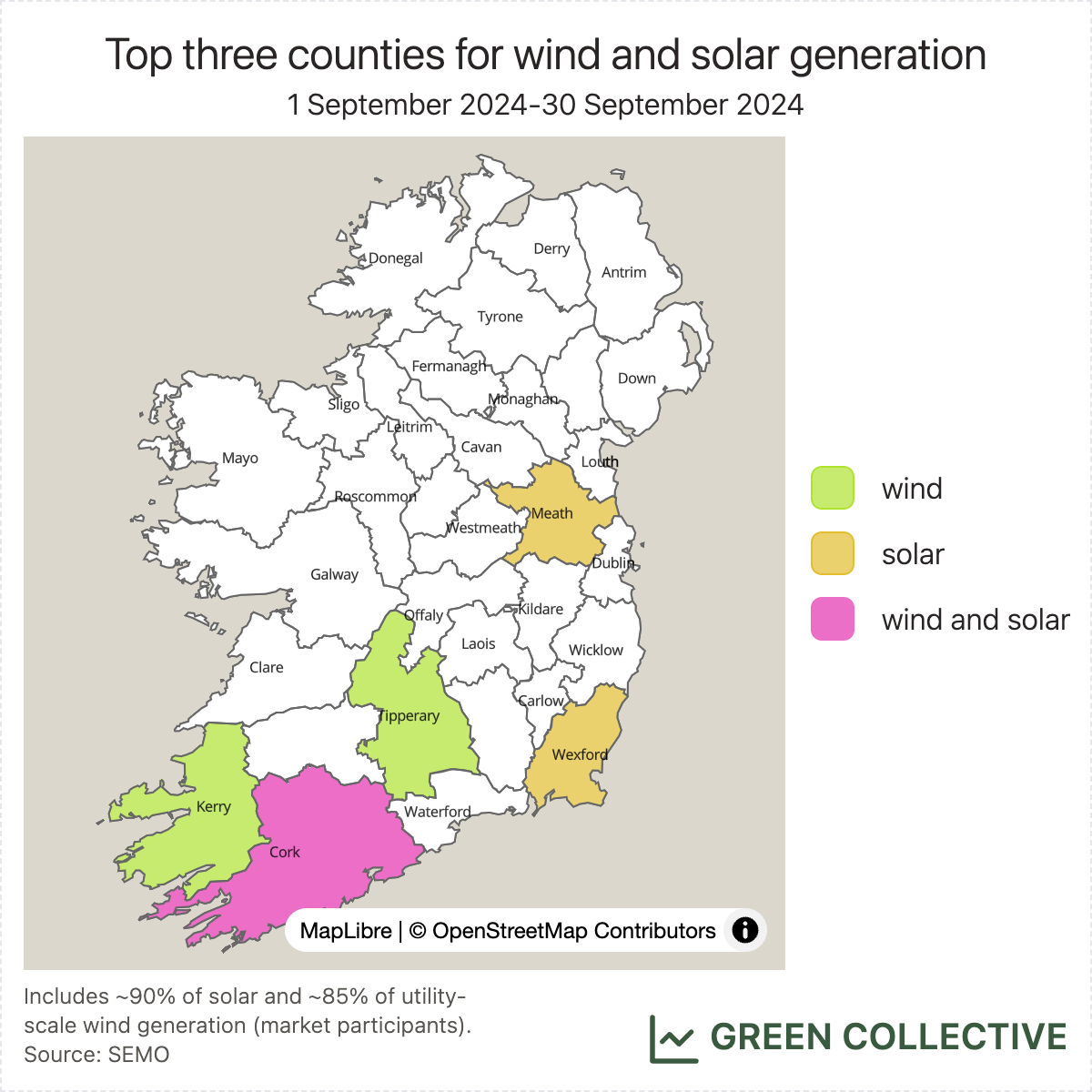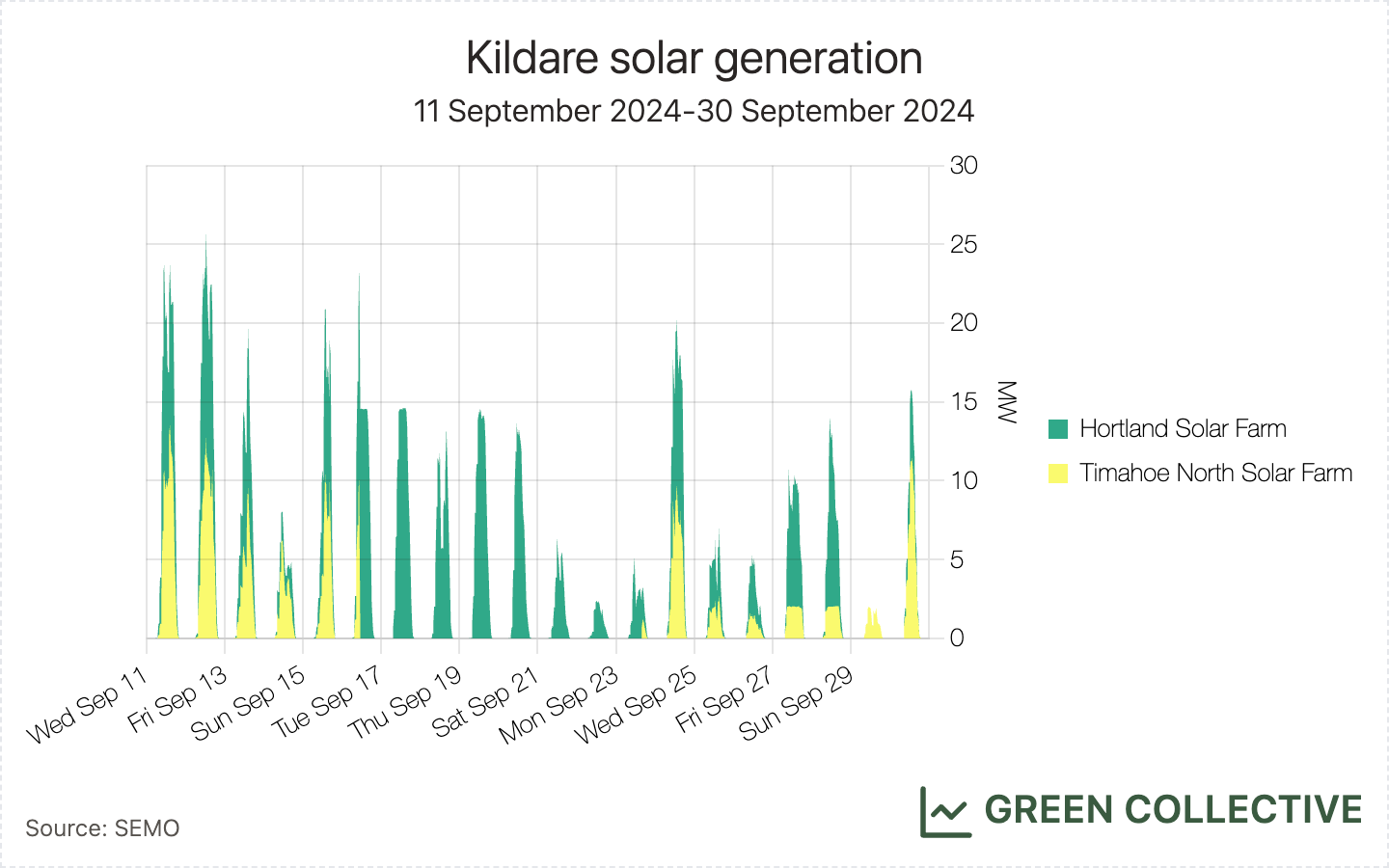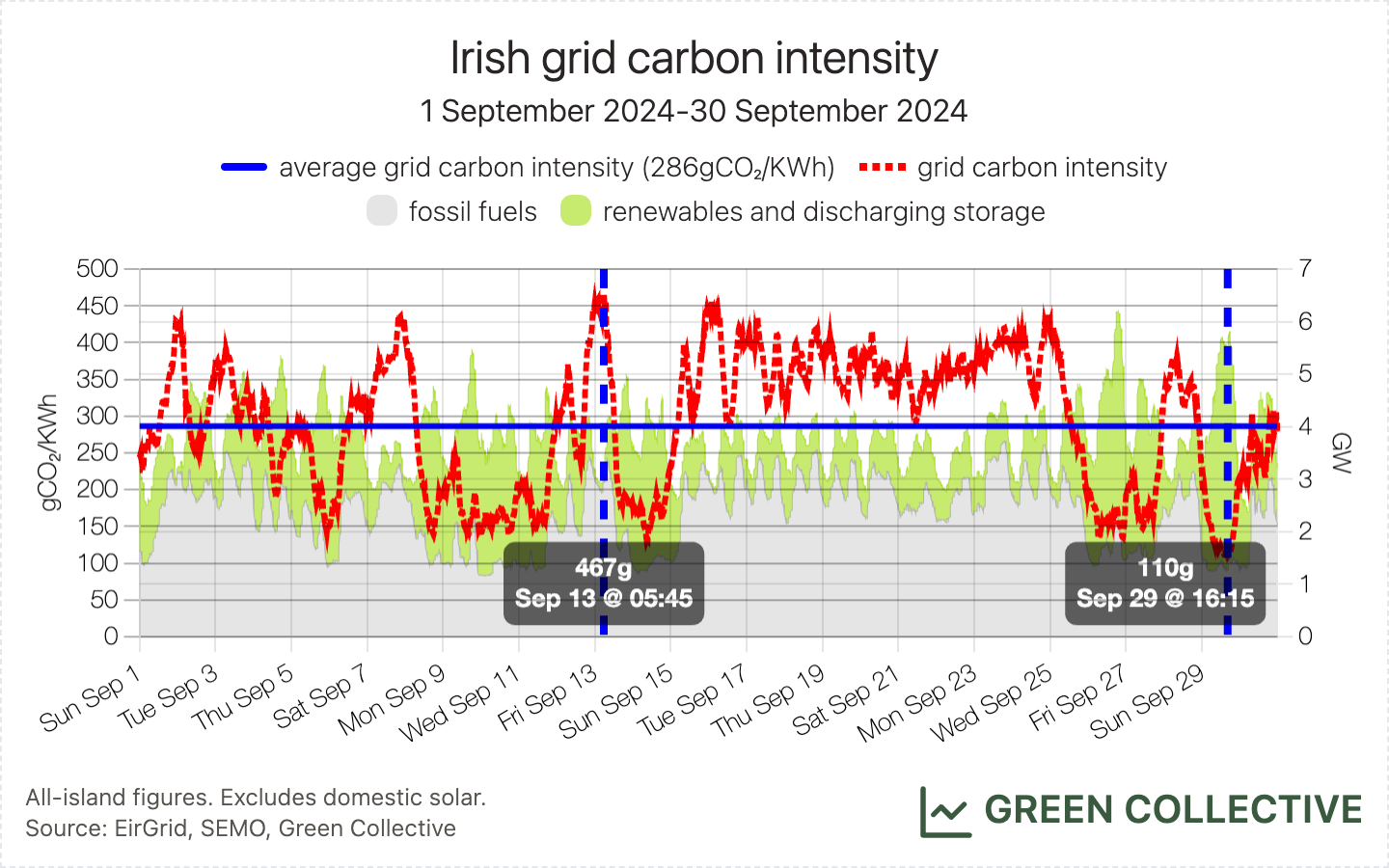This article was first sent to our newsletter subscribers. To receive our monthly reports on the 1st of each month, subscribe now for free.
Summary
Generation from renewable sources during September 2024 was equivalent to 31.9% of all-island electricity demand:
- 28.3% wind
- 0.7% hydro
- 0.3% biomass
- 2.6% solar
1024.9GWh was the second-highest amount of renewable generation yet seen during a September month, beaten only by 2023's 1110GWh. This is the third time that September renewable generation has exceeded 1TWh; the first occurrence was in September 2019.
Peak renewable output of 4310MW at lunchtime on Sunday 29th set a new September record, beating 2023's 4077MW by some distance. This was a stormy day and renewable generation at the time was comprised almost entirely of wind; more on this new record below.
Fossil fuel generation was equivalent to 53.2% of demand. This was the second-lowest share for fossil fuels in a September month, just a fraction higher than September 2023's 52.1%. This continues a welcome sharp decline in fossil fuels' share of September electricity supply which exceeded 70% in 2021 and 2022. We can attribute this sharp decline chiefly to an increased reliance on imports.
So far during 2024, renewable generation has equalled 37.1% of electricity demand and fossil fuels 49.6%.
Exhibit 1: All-island demand met by different sources, September 2024

Exhibit 2: All-island September renewable generation, 2019-2024

Top Counties for Wind and Solar
Top counties for wind:
- Kerry
- Cork
- Tipperary
Top counties for solar:
- Meath
- Wexford
- Cork
Exhibit 3: Top three wind and solar producing counties, September 2024

Wind
909.1GWh from wind power was typical for September but significantly less than 2023's 996.5GWh. However, we did observe a new wind output record for a September month: 4158MW on Sunday 29th. This was equal to 89.8% of demand at the time. As with other monthly wind output records set this year, we can attribute this chiefly to the handful of new wind farms that have come online in the past couple of years.
Counties Cork and Kerry both produced over 100GWh from wind power, Kerry just pipping Cork for top position. Between them, the two southern counties accounted for approximately 24% of the month's wind generation. At their peak around lunchtime on the stormy Sunday September 29, Cork and Kerry wind farms were supplying approximately 27% of all-island demand.
Solar
Irish solar ends its record-breaking run: this is the first month since March that we cannot report a significant new record.
However, solar continues to perform strongly as we approach winter: peak monthly solar output this month was 690MW on September 19 which isn't so far from the current all-time high of 719MW, itself set in late August. Though the days will of course continue to grow shorter, this and the continued addition of new solar farms may yet help us see solar output records broken again before the end of the year. One such recent addition, Timahoe North in Kildare, with an eventual capacity of 108MW, started generating during September.
As in recent months, County Meath was home to approximately 50% of the month's solar generation with the next largest producer, County Wexford, well behind on approximately 22%.
Exhibit 4: Kildare solar generation, September 11-30 2024

Carbon Emissions
We estimate that for each kWh of electricity generated in September the Irish grid emitted between between 110g and 467g of CO2, for an average of 286gCO2/kWh.
As has been the case each month so far this year except for July, this was the lowest grid carbon intensity yet seen for a September month, just below September 2023's 293g.
So far in 2024, the average carbon intensity of the Irish grid has been 258gCO2/kWh.
Exhibit 5: Irish grid carbon intensity, September 2024
